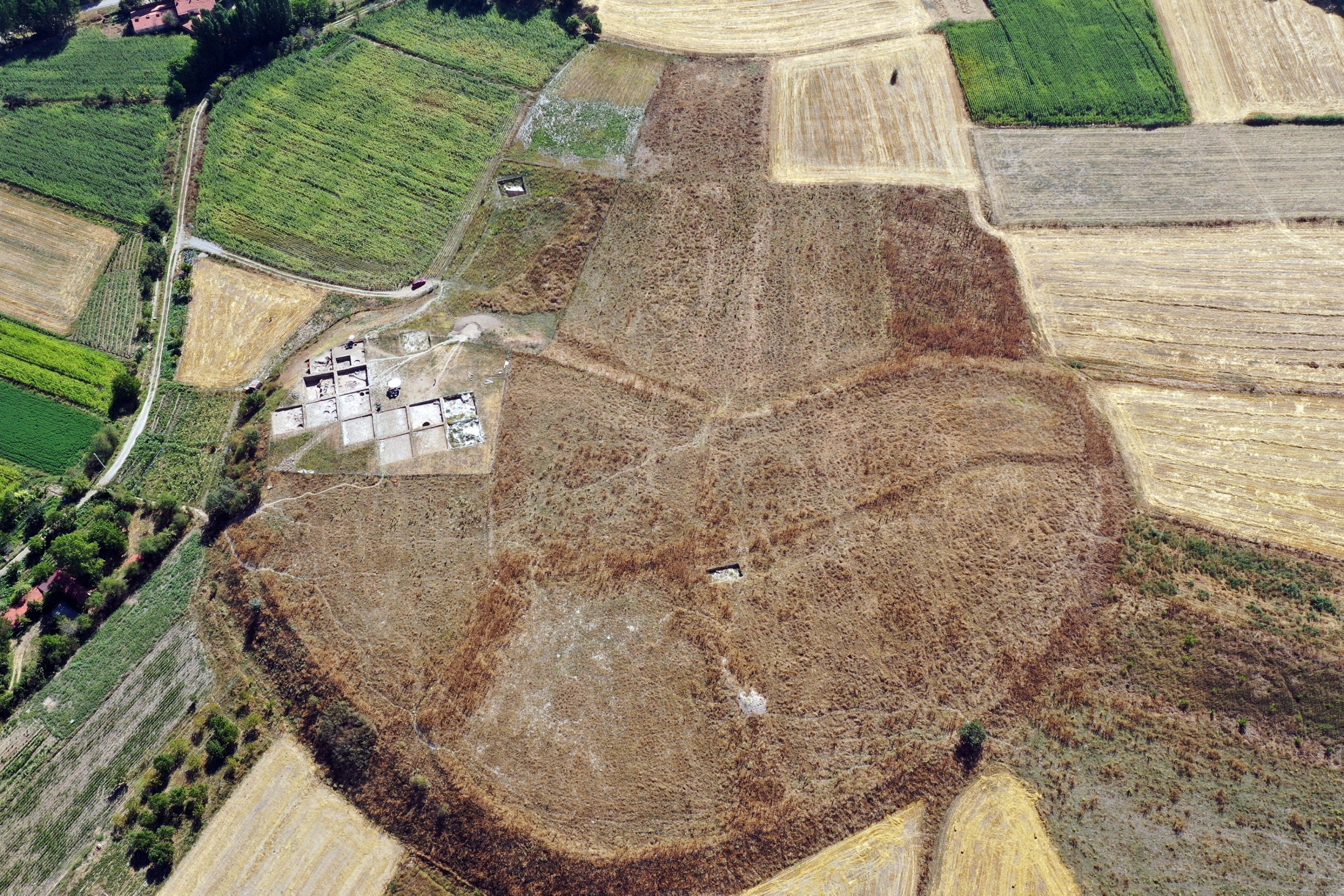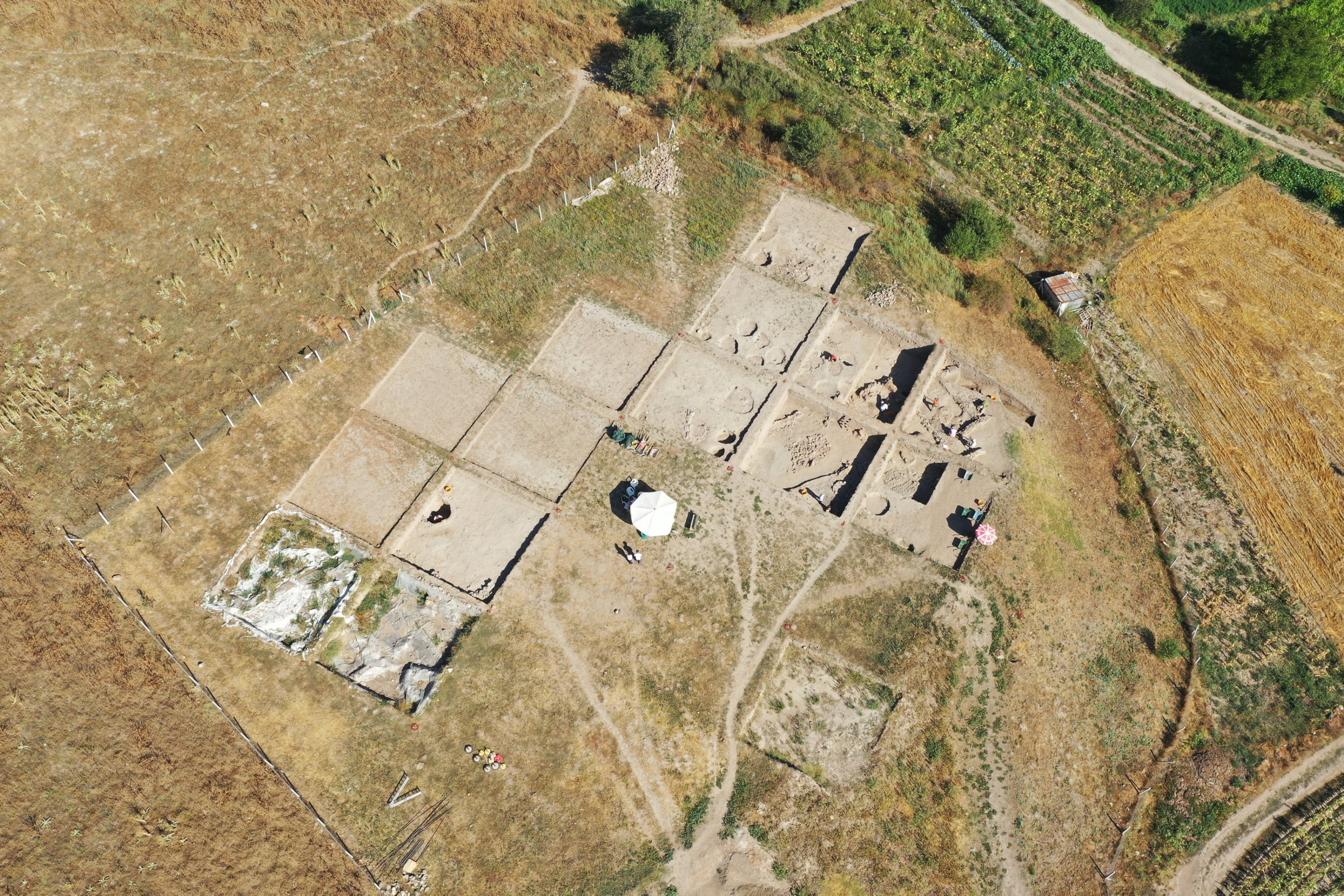© Turkuvaz Haberleşme ve Yayıncılık 2025
Archaeologists discovered well-preserved brain and skin remnants belonging to two individuals dating back to the Bronze Age in excavations carried out in the heart-shaped Tavşanlı Mound in Türkiye’s Kütahya province.

The finding was remarkable as it marked the first time remnants of skin were discovered in archaeological excavations in Türkiye, while brain remnants were discovered in four or five instances, according to experts.
The brain and skin remnants, belonging to a young and a middle-aged man, were preserved through carbonization, Anadolu Agency (AA) reported, adding that experts believe it belonged to two people who were unable to flee their homes after it was set on fire during an attack 3,700 years ago.
The findings were revealed at a conference organized by the European Association of Archaeologists in Belfast, Northern Ireland on Aug. 30-Sept. 2.
Excavations at the site, also known as the “Heart of Kütahya,” are being led by Professor Erkan Fidan, the head of the archaeology department of the Bilecik Şeyh Edebali University (BŞEU).
Fidan told the conference that the mound is the oldest settlement in the area and that experts believe it was the capital of the region back in the Bronze Age.

He added that they believe there was a large-scale attack on the city in around 1,700 BCE and the whole city was burnt to the ground.
It was left unpopulated for around 300 years, the archaeologist said.
Meanwhile, Professor Yılmaz Selim Erdal from Hacettepe University’s Anthropology Department noted that both skeletons were exposed to high degrees of heat, which allowed the brain to be preserved inside the skull. They also noted that they found skin remnants in one of the skeletons, between the chest and abdomen, also carbonized by heat.
Experts noted that they will now be looking into why the attack was carried out and who did it.
The excavations at the mound were launched through a presidential decree and are expected to last some 30 years.
